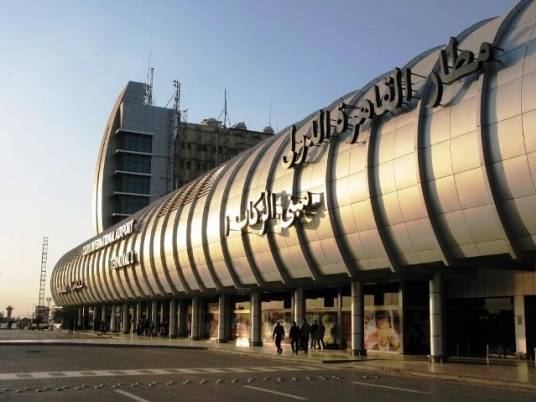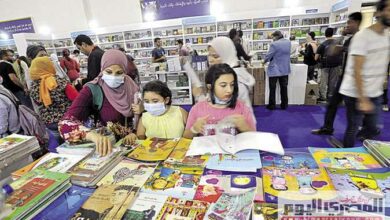
A submission to Salafi thought, wishy-washy attitudes vis-à-vis social protests, the adoption of a rural culture. With these three inflammatory headlines, a remarkable book had hit the market in summer 2012 highlighting the internal politics of the Muslim Brotherhood on the eve of the January 2011 revolution.
In eight academic articles, “The Muslim Brotherhood: Pre-revolution Years” provides an intricate dissection of the social dynamics and power struggles that had rocked Egypt’s oldest Islamist organization in the last decade. At certain points, Hossam Tammam, a seasoned expert on the group who died in October 2011, goes further back in time to explain certain contemporary traits of the country's largest sociopolitical organization and de facto ruling group.
Leaning right
One of the text’s compelling stints is a chapter that traces how Salafi doctrines have penetrated the 84-year-old organization. The author's main argument is that the Brothers had deviated from the initial doctrines of the group, as laid out by founder Hassan al-Banna, with their submission to Wahhabi Salafi thought.
Tammam begins his chapter with a flashback on the organization’s early days, drawing an intriguing portrait of Banna. He contends that he showed more tolerance of the other and more openness to different Islamic schools of thought. Banna never meant for the organization to draw on Wahhabi intransigent thought, according to the book.
To prove his point, Tammam highlights the Sufi component of the Muslim Brotherhood’s identity in the first half of the twentieth century. This Sufi element is enough to convince readers that Banna did not envisage a Salafi organization as Sufism and Salafism are two dichotomous paradigms. For, Salafis, Sufism bears several heretical elements.
Besides, the book says, Banna had discouraged his followers from adopting a special appearance that would distinguish them from the rest of the society. While Salafis have to grow their beards, Banna advised his Brothers against beards, out of fear that such an appearance would contribute to building a psychological barrier between them and their peers outside the organization. Meanwhile, Muslim Sisters of the early days did not use to dress so differently from other women. A headscarf was the only addition to their modern outfit, according to the book.
For Tammam, this relative openness had faded away since the 1950s, in wake of former President Gamal Abdel Nasser’s ruthless crackdown on the organization. While thousands of Brothers languished in Nasser’s prisons, many others had to flee.
“Saudi Arabia represented the main refuge to Muslim Brotherhood leaders and cadres who fled Nasser’s regime,” wrote Tammam. “The Brothers who settled in [Saudi Arabia] were not immune to the influence of the Wahhabi Saudi environment. It was a closed environment that left no room for religious pluralism, let alone ideological pluralism,” adds Tammam.
Eventually, the Brothers perceived Saudi Arabia as the perfect model of the Islamic rule, concludes the author, who dubbed that period the “first wave of Salafization" of the Brothers.
As for the second wave, it kicked off in the aftermath of the 1970s oil boom. The lavish Saudi resources lured thousands of Brothers, who were just released from jail by former President Anwar Sadat, to fly eastward. Meanwhile, the petrodollars helped the Saudis spread their Wahhabi thought beyond their boundaries and influence the religious sphere in neighboring countries, namely Egypt, according to the book.
The failure of Nasser’s Arab nationalist project, manifested in the 1967 defeat in the war against Israel, gave enough leeway to the Saudi Wahhabi project to fill the ideological vacuum, argues the author. Saudi Wahhabi books invaded Egypt and influenced the ultraconservative Islamist youths who had formed the Jama'a al-Islamiya on Egyptian campuses at that time.
Meanwhile, the embattled Muslim Brotherhood leaders were trying to revive the organization after Sadat had allowed Islamists back into politics. To rejuvenate their group, they sought to recruit Islamist university students who became steeped in Wahhabi thought. The new comers ended up reinforcing the Salafi component within the organization.
These youths “had accused the Brothers of giving up on religious matters, neglecting creedal issues and not adopting Salafi positions on growing beards, art, morals, etc.” the book reads.
To appease the new recruits, the group’s old guards gave up the group’s identity as defined by the early founders and surrendered to Salafi doctrines, writes Tammam.
“The group’s leaders had to grow their beards and to commit to all matters of appearance,” Tammam writes.
Besides, the group’s official discourse had shown obvious Salafi traits. For example, the Brothers' mouthpiece dismissed the construction of churches as haram, contended that Christians should pay Jizya, opposed music and and held that Sharia should be implemented regardless of the ruler’s or the people’s will, adds the book.
With the 1990s satellite media boom and resilient Saudi attempts to spread their beliefs, Muslim Brotherhood preachers with Salafi leanings began to make use of satellite channels to propagate their understanding of Islam. Eventually, they became very popular and influential among Muslim Brotherhood rank and file, according to the book.
“It is clear that symbols with dual identities, Salafi and Muslim Brotherhood, have become the most important sources of education among the Brothers,” writes Tammam.
Among the hybrid preachers Tammam lists are two currently controversial figures: Safwat Hegazy, who had promoted President Mohamed Morsy as the only leader capable of reviving the Islamic caliphate and retrieving Jerusalem during the presidential race, and Hazem Salah Abu Ismail, the Salafi presidential hopeful who was kicked out of the race because his mother held dual citizenship.
In the lead-up to the revolution, this Salafi mood has resonated with the group's hawkish figures, who used to subscribe to the radical thoughts of Islamist thinker Sayed Qutb. Qutb, a Muslim Brotherhood leader, was executed by Nasser after having drafted an incendiary book that promoted jihad against the ruling regime and accused society of languishing in heresy.
Although Qutb's ideas were later dismissed by the Muslim Brotherhood's leaders, the Guidance Bureau still has members who, despite their renunciation of violence, still believe in Qutb's radical views on politics and society. Mohamed Badie, the supreme guide, and his deputy, Mahmoud Ezzat are considered among the representatives of Qutb's wing within the group, says Tammam.
For Tammam, this conservative context, coupled with Mubarak's crackdown on the group in late 2006, paved the way for the marginalization of reformist Brothers and a takeover by the hawkish wing.
This takeover was first manifested in the group's political platform released in 2007, says the book. Although reformists had been making statements suggesting that the group had fully espoused democracy and several liberal values, the Brotherhood's political program came to refute all these claims. Three controversial clauses proved that the conservative wing was in full control. A provision stipulating that all bills should be approved by a clerical body and two clauses denying Copts and women the right to run for president were enough to elicit the stir of liberals and Christians.
The hawkish control was asserted further in the 2009 elections of the Guidance Bureau, which culminated in the exclusion of progressive voices such as Abdel Moneim Abouel Fotouh and Mohamed Habib, says Tammam. Then, the conservative incursions reached their peak with the election of Badie, who belongs to the Qutb's school, in early 2010.
Discomfort over labor unrest
Another insightful chapter dissects the group’s position on the labor unrest that had rocked Egypt during the last five years of Hosni Mubarak’s rule. Tammam described the Brothers’ stance on the matter as "highly perplexed" and "hesitant." Throughout the chapter, he lists the reasons why the group refrained from supporting the social discontent triggered by Mubarak’s neo-liberal policies. First, Tamman contends that the group’s paradigm differs entirely from this kind of protest movements. While social protests are preoccupied with precise issues, namely salaries and working conditions, the Brothers hold a "traditional" perception of political action that gives priority to a comprehensive agenda for political reform.
Second, the group's "introversion" and "snobbism" made it hard for it to open up to these movements, wrote Tammam. Third, the Brothers are inherently averse to protests that invoke economic rights as they feel they are influenced by leftist ideologies, contends the author. Historically, Islamists have been hostile to leftist paradigms for their critical stance on religion.
Fourth, the Muslim Brotherhood is more of a middle-class project that has been always distant from the poor and marginalized classes. Fifth, the Brothers could not throw their backing behind these protests because they themselves have been supportive of a free-market economy, privatization and economic restructuring since the 1970s, concludes Tammam.
The group's ruralization
Finally, the book, authored before the revolution, includes an intriguing chapter on the assertion of a rural culture within the ranks of the Muslim Brotherhood in recent years.
“Upon initiatives from the Guidance Bureau, the influence of rural provinces has increased in recent years," wrote Tammam. “The recruitment and promotions within the organization have been favoring those coming from the countryside at the expense of the indigenous urban population."
The influx of Brothers with a rural baggage has culminated in the weakening of internal institutional channels, the proliferation of patronage and the reinforcement of traditional norms, according to the book.
“The influence of governorates such as Daqahlia, Sharqiya, Gharbiya, Assiut and Minya has increased. These governorates have controlled most of the key positions in the group," reads the book. Tammam goes on listing the Brothers with rural culture who had risen to senior positions in the last decade. Morsy and Saad al-Katatny, former speaker of the now-dissolved People's Assembly, are among the names listed. Meanwhile, the representation of "urban cosmopolitan" centers such as Cairo and Alexandria has decreased, adds the author.
Despite the smart observation, the author fails to provide a precise definition of "a rural" background. Being from outside Cairo or Alexandria is not enough evidence of bearing a rural culture because many of Egypt's governorates have full-fledged urban centers. Meanwhile, a Cairene or an Alexandrian Brother does not necessarily come in with an urban culture because he may belong to one of the many rural areas that surround both cities.
It remains to be seen if the Brothers would be obliged to reverse some of the attitudes laid out in the book after their ascent to power. Upholding the same averse position on social protests, neglecting economic rights, and pursuing neo-liberal policies may be politically costly for a government presiding over a large disenchanted poor population.
On another front, proceeding with Salafi thought and adhering to a traditional rural culture would not serve the Brothers' attempts to open up to the west and prove themselves as a moderate force capable of maintaining domestic and regional stability.




